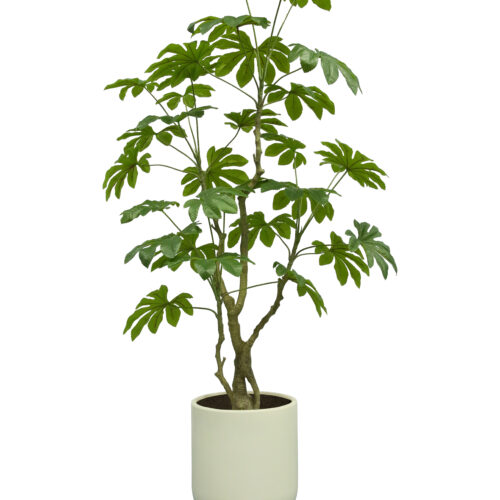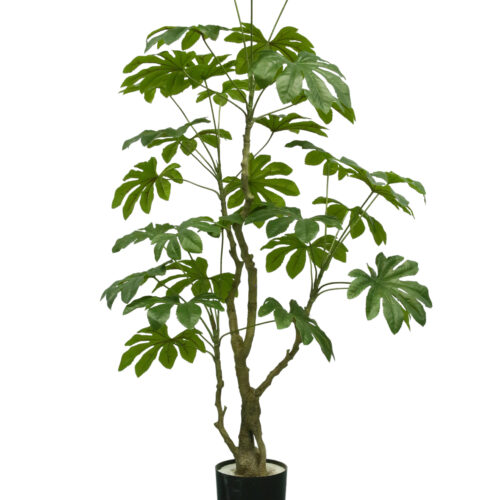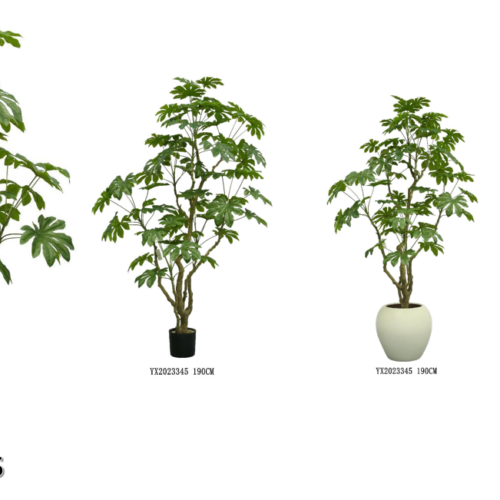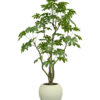32 LEAVES EIGHT HORN FICUS
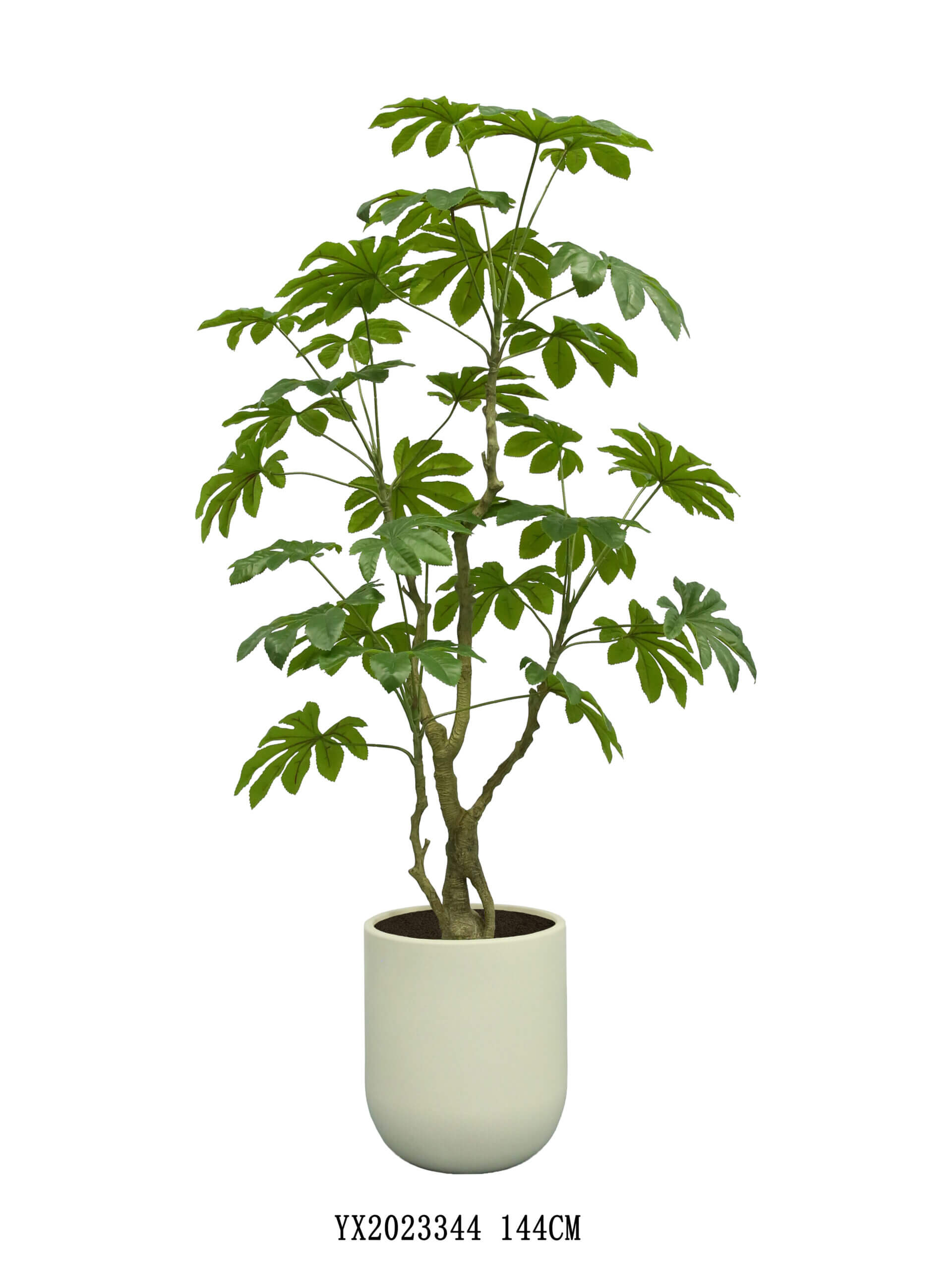
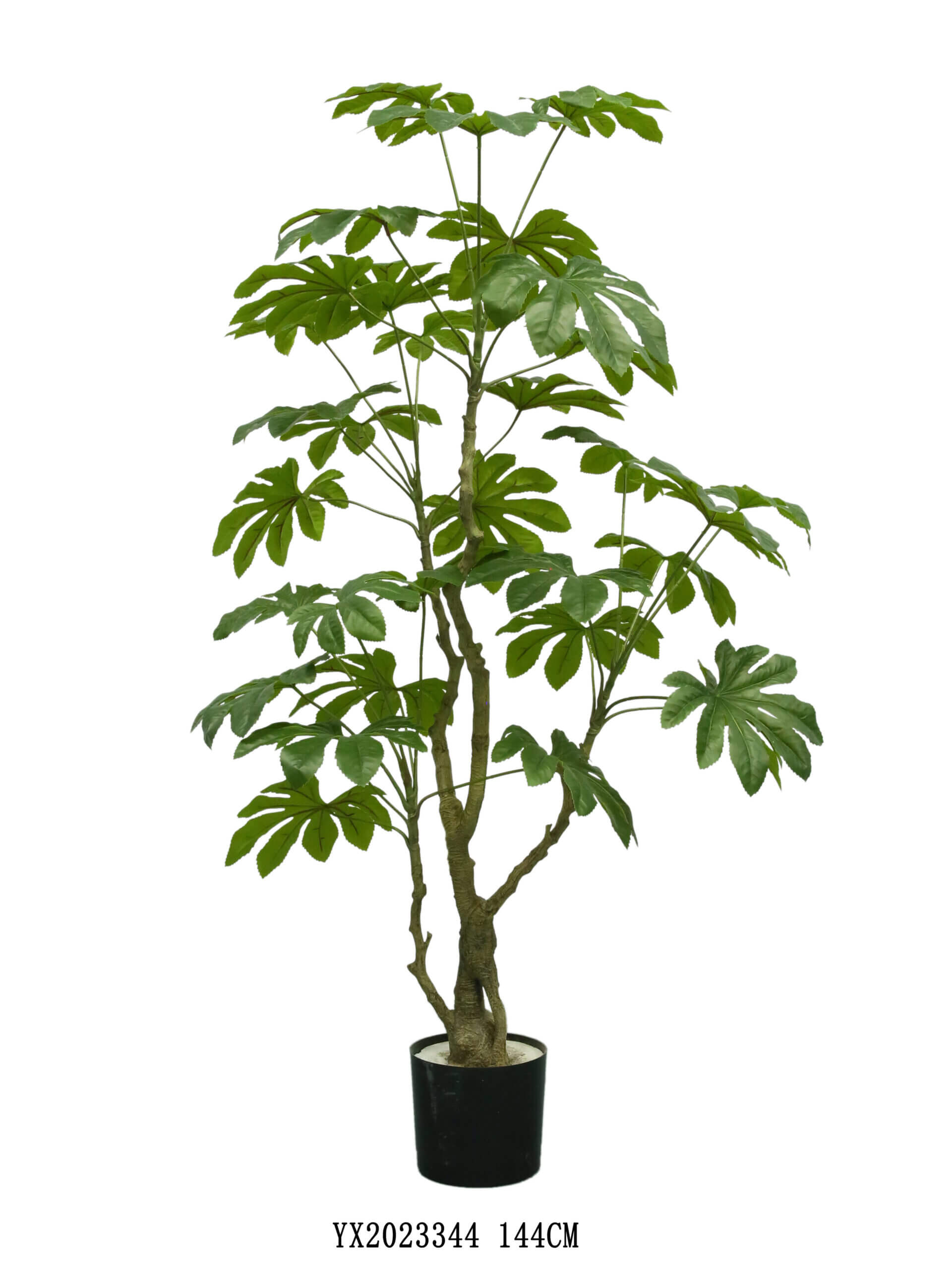
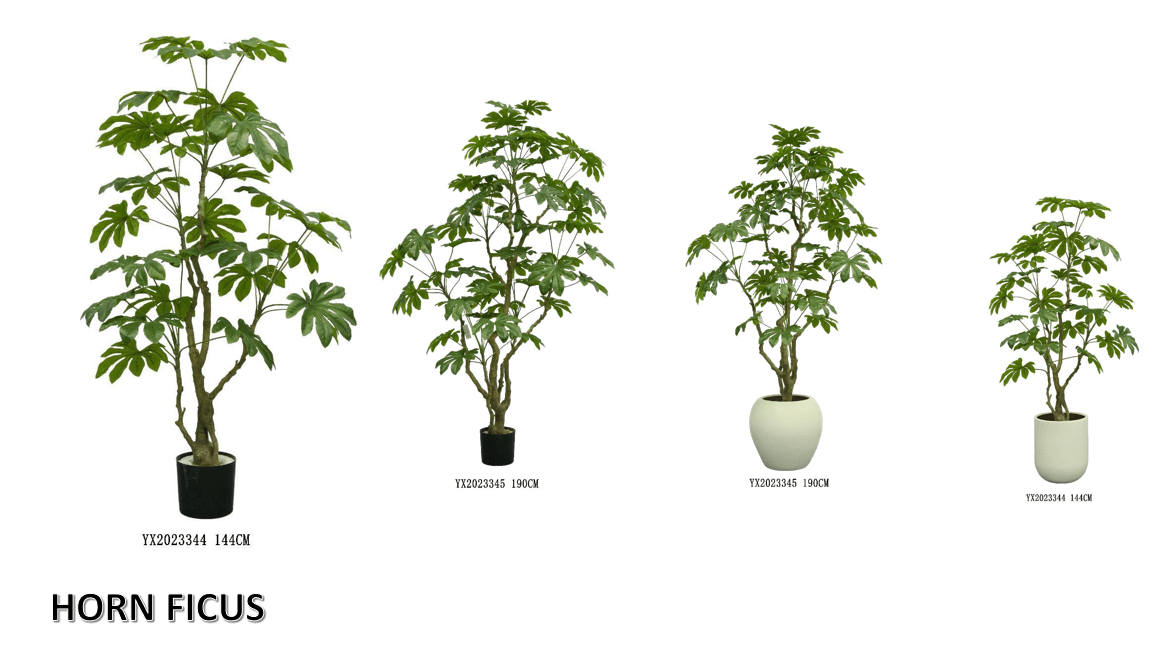

32 – Leaves Eight – Horn Ficus Artificial Tree
- General Introduction
This artificial tree is modeled after the 32 – leaves eight – horn ficus. It is carefully crafted to replicate the unique features of the original plant, providing an alternative for those who want to enjoy its aesthetic value without the need for real – plant maintenance. - Structure and Appearance
- Leaves: The most prominent feature is its 32 leaves. These leaves are made from high – quality synthetic materials that mimic the texture, color, and flexibility of real ficus leaves. They are usually a rich green color, with detailed veining patterns that add to the authenticity. The edges of the leaves may have a slightly serrated or smooth finish, depending on the specific design to match the characteristics of the eight – horn ficus.
- Branches and Horns: The branches are designed to support the leaves in a natural – looking arrangement. The eight – horn feature is replicated with precision. These “horns” are made from durable materials such as plastic or resin – based composites. They are carefully shaped and positioned to give the tree its distinct appearance. The surface of the branches and horns may have a textured finish to imitate the bark of the real tree, adding a touch of realism.
- Trunk: The trunk of the artificial tree is constructed to be sturdy and stable. It can be made from materials like fiberglass or a solid plastic core covered with a textured layer to resemble the bark of the eight – horn ficus. The color of the trunk is usually a darker shade of brown, with variations in tone to create a more natural look.
- Materials and Manufacturing Process
- Synthetic Materials: High – grade plastics and synthetic fabrics are commonly used. These materials are chosen for their ability to withstand environmental factors such as sunlight, temperature changes, and humidity without fading or deteriorating quickly. The synthetic leaves are often made from a combination of materials that give them the right flexibility and durability.
- Molding and Assembly: The manufacturing process involves molding the different parts of the tree, such as the leaves, branches, horns, and trunk. Advanced molding techniques are used to ensure accurate replication of the original plant’s features. Once the parts are molded, they are assembled by skilled workers. The leaves are attached to the branches using secure fastening methods, and the branches are then fixed to the trunk to create a stable and realistic – looking artificial tree.
- Applications and Advantages
- Indoor Decoration: This artificial tree is ideal for indoor use in various settings such as homes, offices, hotels, and shopping malls. It can add a touch of nature to the interior environment, creating a relaxing and visually appealing atmosphere. In homes, it can be placed in living rooms, hallways, or study areas. In commercial spaces, it can enhance the overall decor and attract customers.
- Low Maintenance: One of the main advantages is that it requires minimal maintenance compared to a real 32 – leaves eight – horn ficus. There is no need for watering, fertilizing, or pruning. It can maintain its appearance year – round without any special care, making it a convenient choice for those with busy lifestyles or in areas where it may be difficult to grow the real plant.
- Long – term Durability: The use of high – quality materials and advanced manufacturing processes ensures that the artificial tree has a long lifespan. It can be reused in different settings and will not be affected by common problems that real plants face, such as pest infestations or diseases.
用更简单的词汇描述人造树
人造树有哪些优缺点?
人造树的价格一般是多少?



